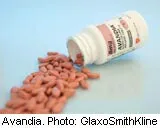The well-known fact is calories consumed and not needed are converted to fat. Nevertheless, there are some that can eat all day and never put on weight. Nevertheless you have to be aware that your body needs calories to work at a good level. If you chronically deprive yourself of nutrition, then your body always will feel constantly fatigued. Therefore, the initial step would be to begin decreasing foods that are not helping your weight problem. It's always much easier to scale back, initially, than try to completely eliminate them.
Of course you should make a parallel effort to begin eating healthier foods on a daily basis. Keep in mind you want to avoid altering everything simultaneously. This technique is worth testing for those who have gone the route of starving yourself without success. What you are accomplishing is taking baby steps and boosting your efforts as time goes on. Once you are feeling confident with what you have done, then just do a little more using the same approach. On top of that, you may consider introducing some kind of physical exercise to your weekly routine.
Make certain you examine exactly what you are eating every day with regards to how good it is for you. High carbohydrate foods together with those with an excessive amount of sugar need to be determined. Always remember that one's body requires fat, but it is the healthy variety that is right for you. The unhealthy fats are highly saturated fats, and merely consider fast foods as well as highly refined foods. You do not want to get rid off them all at once, so then as we said above cut back little by little. Commit to a serious attempt to bring about some kind of healthy change, and each time you do that you will feel more self-assured.
It is advisable to make these small changes a part of your new behaviors and habits. This may of course take time, but that is the trade-off as you make smaller modifications. On the other hand, this approach definitely will work for some people who cannot make radical changes. Just remember that you need to keep striving forward and cutting out increasingly more fattening foods. However, as soon as the results start to happen, then that can have a magical effect on your aspiration to change. You never know how you will react when you start losing weight and eating less, and being healthier, is actually easier.
source : A Much More Gentle Method Of Weight Loss



















